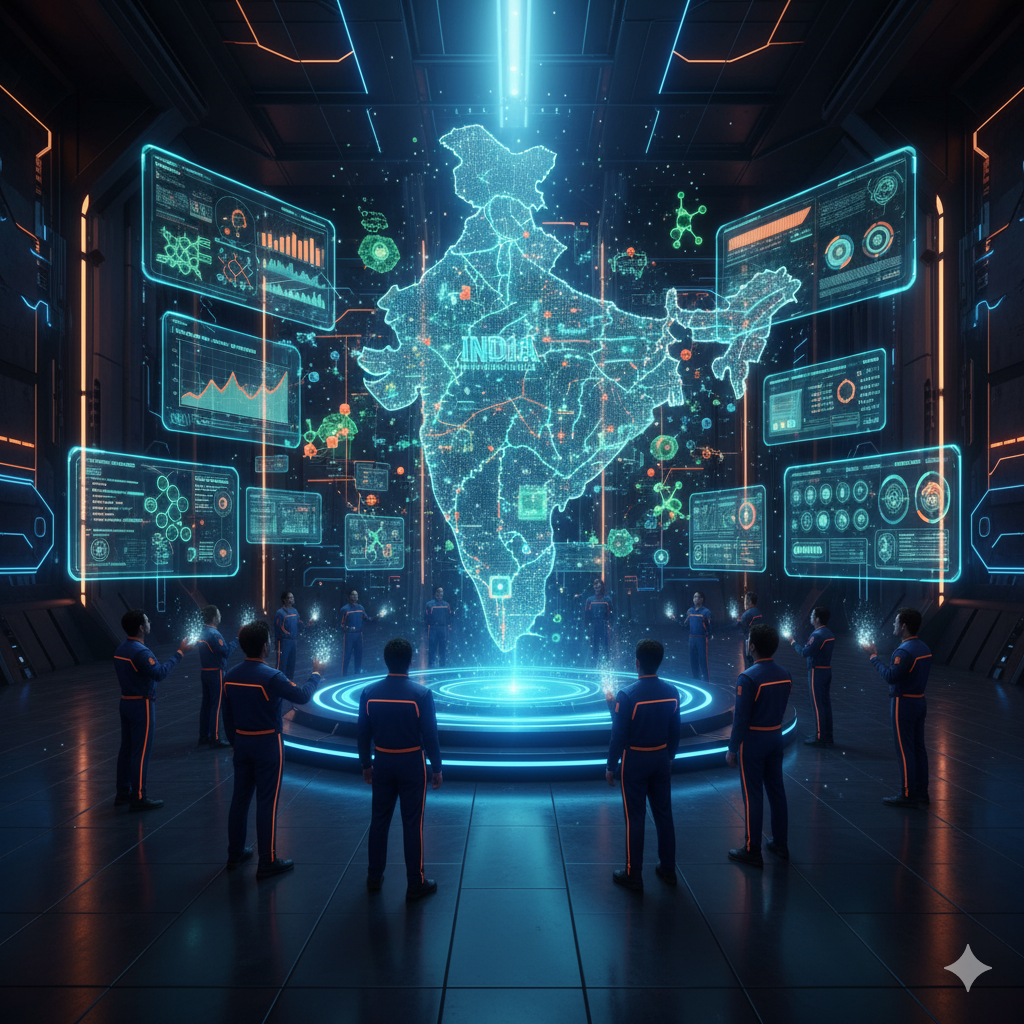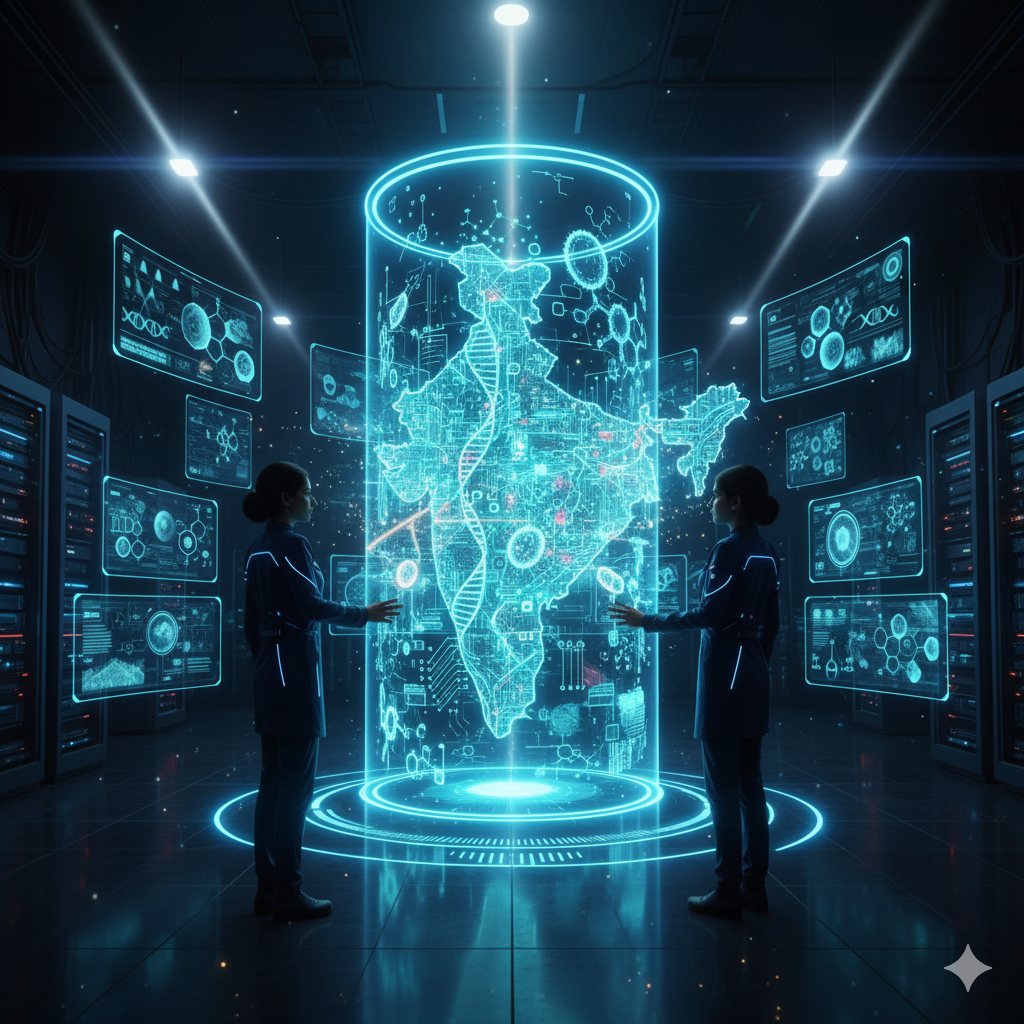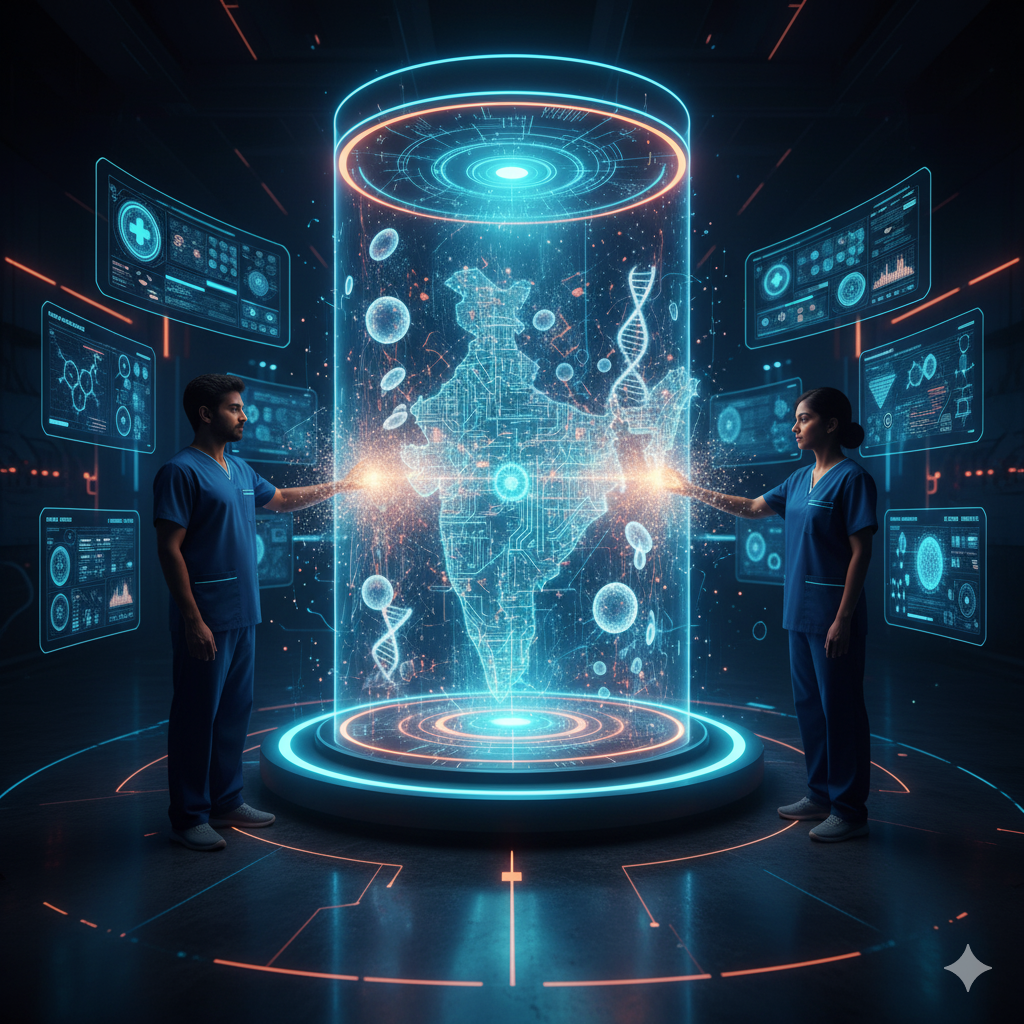Introduction
The 21st century is often referred to as the “century of technology and innovation”, where advancements in science increasingly shape economic growth, societal welfare, and global competitiveness. Among the emerging fields, nanotechnology stands out as one of the most transformative and interdisciplinary technologies, promising breakthroughs in medicine, energy, agriculture, materials, electronics, and environmental management.
Nanotechnology involves the manipulation of matter at the nanoscale (1–100 nanometers), where materials often exhibit unique physical, chemical, and biological properties. These properties enable applications that are more efficient, sustainable, and cost-effective than traditional technologies. Recognizing the potential of nanotechnology, the Indian government launched the National Mission on Nanoscience and Technology (NMNT) to harness this field for the country’s development.
This essay explores why nanotechnology is critical in the 21st century, the features of India’s mission on nanoscience and technology, and its scope for driving socio-economic development.
1. Nanotechnology: A Defining Technology of the 21st Century
1.1 Interdisciplinary Nature
- Nanotechnology integrates physics, chemistry, biology, materials science, engineering, and medicine, enabling innovative solutions across sectors.
- Its applications range from nanoelectronics and sensors to drug delivery and environmental remediation.
1.2 Unique Properties at the Nanoscale
- Materials at the nanoscale exhibit distinct optical, mechanical, electrical, and chemical properties compared to their bulk counterparts.
- Examples:
- Carbon nanotubes – extremely strong yet lightweight, used in construction, electronics, and aerospace.
- Quantum dots – exhibit unique optical properties, applied in imaging and display technologies.
- Nanoparticles – enhanced reactivity for catalysts, drug delivery, and environmental cleanup.
1.3 Drivers of Innovation
- Nanotechnology fosters miniaturization, precision, and efficiency.
- Supports high-performance materials, energy-efficient devices, and medical diagnostics.
- Drives economic competitiveness and addresses global challenges such as energy scarcity, food security, and healthcare.
1.4 Global Importance
- Major economies like the USA, EU, China, and Japan prioritize nanotechnology in their strategic R&D.
- It is considered a “key enabling technology”, influencing sectors such as electronics, aerospace, biotechnology, and renewable energy.
2. India’s Mission on Nanoscience and Technology
2.1 Launch and Objectives
- The National Mission on Nanoscience and Technology (NMNT) was launched by the Government of India in 2007 under the Department of Science and Technology (DST).
- Objectives:
- Research and Development: Promote cutting-edge research in nanoscience and nanotechnology.
- Technology Translation: Convert laboratory innovations into commercially viable technologies.
- Infrastructure Development: Establish nanotechnology research centers, laboratories, and pilot plants.
- Human Resource Development: Train scientists, engineers, and entrepreneurs in nanoscience.
- International Collaboration: Engage in global partnerships to advance research and innovation.
- Research and Development: Promote cutting-edge research in nanoscience and nanotechnology.
2.2 Institutional Framework
- Nanotechnology Centers of Excellence: Spread across India, these centers focus on materials, energy, health, and environmental nanotechnology.
- Academic Programs: Postgraduate, doctoral, and specialized courses in nanoscience to create a talent pool for research and industry.
- Public-Private Partnerships: Encourage industry adoption of nanotechnology through pilot projects, incubation centers, and technology transfer.
2.3 Research Focus Areas
- Nanomaterials: Development of nano-composites, nanoparticles, nanotubes, and nanowires for industrial and medical applications.
- Nanoelectronics: Miniaturization of electronic components, high-performance semiconductors, sensors, and quantum devices.
- Nanobiotechnology: Drug delivery systems, diagnostic nanodevices, tissue engineering, and biosensors.
- Energy Applications: Solar cells, batteries, fuel cells, and supercapacitors with enhanced efficiency using nanomaterials.
- Environmental Applications: Water purification, air filtration, pollutant degradation, and nanocatalysts for sustainable industry.
2.4 Funding and Support Mechanisms
- Government provides grants, fellowships, and research infrastructure.
- Collaboration with industries, startups, and international research labs to accelerate technology translation.
- Focus on patenting, commercialization, and technology incubation to strengthen the nanotech ecosystem.
3. Scope of Nanotechnology in India’s Development Process
3.1 Healthcare and Medicine
- Targeted Drug Delivery: Nanoparticles enable precise delivery of drugs to affected cells, reducing side effects and improving treatment efficacy.
- Cancer Treatment: Nanocarriers and nanorobots improve chemotherapy and imaging for early detection.
- Diagnostics: Nano-biosensors detect diseases at molecular levels, supporting rapid and cost-effective diagnosis.
- Medical Devices: Nanocoatings and nanosensors enhance implant durability and infection resistance.
3.2 Agriculture and Food Security
- Nano-fertilizers and Nano-pesticides: Increase nutrient absorption, reduce chemical usage, and enhance crop yield.
- Soil and Water Sensors: Provide real-time monitoring for irrigation and soil health management.
- Food Packaging: Nanomaterials improve shelf-life, microbial resistance, and food safety.
3.3 Energy and Sustainability
- Solar Energy: Nanostructured solar cells improve efficiency and cost-effectiveness.
- Batteries and Storage: Nano-based electrodes enhance energy density and lifespan of batterie.
- Catalysis: Nanocatalysts improve chemical and industrial processes, reducing energy consumption.
3.4 Environment and Clean Technology
- Water Purification: Nanofilters remove heavy metals, bacteria, and viruses, providing clean drinking water.
- Air Pollution Control: Nanomaterials capture particulate matter and toxic gases efficiently.
- Waste Management: Nanotechnology enables recycling, degradation of pollutants, and resource recovery.
3.5 Industrial and Manufacturing Applications
- Advanced Materials: Lightweight, high-strength nano-composites for automotive, aerospace, and construction industries.
- Textiles: Nanocoatings provide waterproofing, stain resistance, and antimicrobial properties.
- Electronics: Miniaturized circuits, flexible displays, and high-speed data devices.
3.6 Defense and Security
- Nanomaterials contribute to lightweight armor, sensors, stealth technology, and energy-efficient devices for defense applications.
- Supports advanced surveillance systems, communication equipment, and bio-defense.
3.7 Education and Research Capacity Building
- Nanotechnology programs in universities foster critical thinking, innovation, and entrepreneurship.
- Creation of nanotech incubators and research hubs encourages startups and commercialization of research.
4. Salient Features of India’s Mission on Nanotechnology
- Interdisciplinary Approach: Integrates physics, chemistry, biology, engineering, and materials science.
- Innovation and Commercialization: Focuses on converting research into products for societal benefit.
- Human Resource Development: Develops skilled manpower through training and academic programs.
- Infrastructure Development: Establishes state-of-the-art labs, pilot plants, and centers of excellence.
- International Collaboration: Promotes joint research, technology exchange, and knowledge sharing.
- Regulatory and Ethical Framework: Ensures safe handling of nanomaterials and responsible innovation.
- Application-Oriented Research: Prioritizes healthcare, agriculture, energy, environment, and industry.
5. Challenges and Opportunities
5.1 Challenges
- High Cost of Research and Development: Nanotechnology infrastructure and materials are expensive.
- Regulatory and Safety Concerns: Potential toxicity and environmental impact of nanoparticles must be managed.
- Skill Gap: Need for trained personnel in nanoscience, engineering, and industrial applications.
- Technology Translation: Converting research into commercial products remains challenging.
5.2 Opportunities
- Innovation-Driven Economy: Nanotechnology can stimulate high-tech industries and startups.
- Healthcare Revolution: Personalized medicine, early disease detection, and advanced treatment methods.
- Sustainable Agriculture: Efficient resource utilization and food security.
- Energy Independence: Advanced storage, solar, and renewable energy technologies.
- Environmental Protection: Pollution control, water purification, and waste management.
6. Nanotechnology and National Development
- Nanotechnology is a strategic technology, impacting economic growth, public health, environmental sustainability, and global competitiveness.
- It supports India’s developmental goals, including:
- Self-reliance in high-tech manufacturing
- Sustainable energy and water management
- Enhanced healthcare access in rural and urban areas
- Job creation in research, industry, and services
- By integrating nanotechnology into policy planning, industry, and education, India can leverage it for inclusive and sustainable national development.
Conclusion
Nanotechnology is undeniably one of the key technologies of the 21st century due to its interdisciplinary nature, unique properties, and transformative potential. India’s National Mission on Nanoscience and Technology provides a robust framework for harnessing this technology for societal and economic advancement.
Through applications in healthcare, agriculture, energy, environment, industry, and defense, nanotechnology is poised to revolutionize India’s development trajectory, improve quality of life, and position India as a global leader in cutting-edge science and innovation.
The continued emphasis on research, human resource development, infrastructure, and technology translation will ensure that nanotechnology contributes meaningfully to India’s socio-economic development and sustainable growth in the decades ahead.




